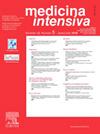脓毒性休克的休克指数评估:系统综述
IF 2.7
4区 医学
Q2 CRITICAL CARE MEDICINE
引用次数: 0
摘要
目的 确定已发表的有关脓毒性休克或严重脓毒症患者休克指数(SI)的研究,并描述其主要发现和结论。设计 按照 PRISMA 协议(系统综述和 Meta 分析首选报告项目)的建议对文献进行系统综述:患者14岁以上的脓毒性休克患者。干预措施报告休克指数或其修正变体测量结果的研究。主要关注变量用中心倾向和离散度评估绝对频率和相对频率。结果共纳入 17 篇文章,其中 11 篇研究了作为死亡率预测指标的休克指数。其中 7 篇文章发现,幸存者与非幸存者的 SI 存在明显差异,并观察到 SI 变化与临床结果之间的关系。其他研究证明了修正冲击指数与心肌抑制和死亡率之间的关系。此外,他们还确定了舒张性休克指数、多巴酚丁胺给药剂量与死亡率之间的关系。SI 还有助于确定患者的输液管理。本文章由计算机程序翻译,如有差异,请以英文原文为准。
Evaluación del índice de shock en choque séptico: una revisión sistemática
Objective
To identify published research on the Shock Index (SI) in patients with septic shock or severe sepsis and to describe its main findings and conclusions.
Design
Systematic review of the literature following the recommendations of the PRISMA protocol (Preferred Reporting Items for Systematic Reviews and Meta-Analyses).
Settings
The following databases were consulted: Pubmed, Embase, Library Cochrane and Lilacs.
Patients
Patients older than 14 years with septic shock. Pregnant women and population with COVID-19 were excluded.
Interventions
Studies reporting measurement of the shock index or its modified variants.
Main variables of interest
Absolute frequencies and relative frequencies were assessed with measures of central tendency and dispersion. Effect estimators (OR, RR and HR) were extracted according to the context of each study.
Results
Seventeen articles were included, of which 11 investigated the SI as a predictor of mortality. Seven of them found significant differences in the SI when comparing survivors to non-survivors and observed a relationship between the SI evolution and clinical outcomes. Additional research evidenced a relation between the Modified Shock Index and myocardial depression, as well as mortality. Furthermore, they identified a relationship between the Diastolic Shock Index, the dose of administered dobutamine, and mortality.
Conclusions
The results suggest that both the SI and its modified versions, particularly in serial assessments, can be considered for evaluating patient prognosis. The SI can also aid in determining fluid management for patients.
求助全文
通过发布文献求助,成功后即可免费获取论文全文。
去求助
来源期刊

Medicina Intensiva
CRITICAL CARE MEDICINE-
CiteScore
2.70
自引率
20.00%
发文量
146
审稿时长
33 days
期刊介绍:
Medicina Intensiva is the journal of the Spanish Society of Intensive Care Medicine and Coronary Units (SEMICYUC) and of Pan American and Iberian Federation of Societies of Intensive and Critical Care Medicine. Medicina Intensiva has become the reference publication in Spanish in its field. The journal mainly publishes Original Articles, Reviews, Clinical Notes, Consensus Documents, Images, and other information relevant to the specialty. All works go through a rigorous selection process. The journal accepts submissions of articles in English and in Spanish languages. The journal follows the publication requirements of the International Committee of Medical Journal Editors (ICMJE) and the Committee on Publication Ethics (COPE).
 求助内容:
求助内容: 应助结果提醒方式:
应助结果提醒方式:


